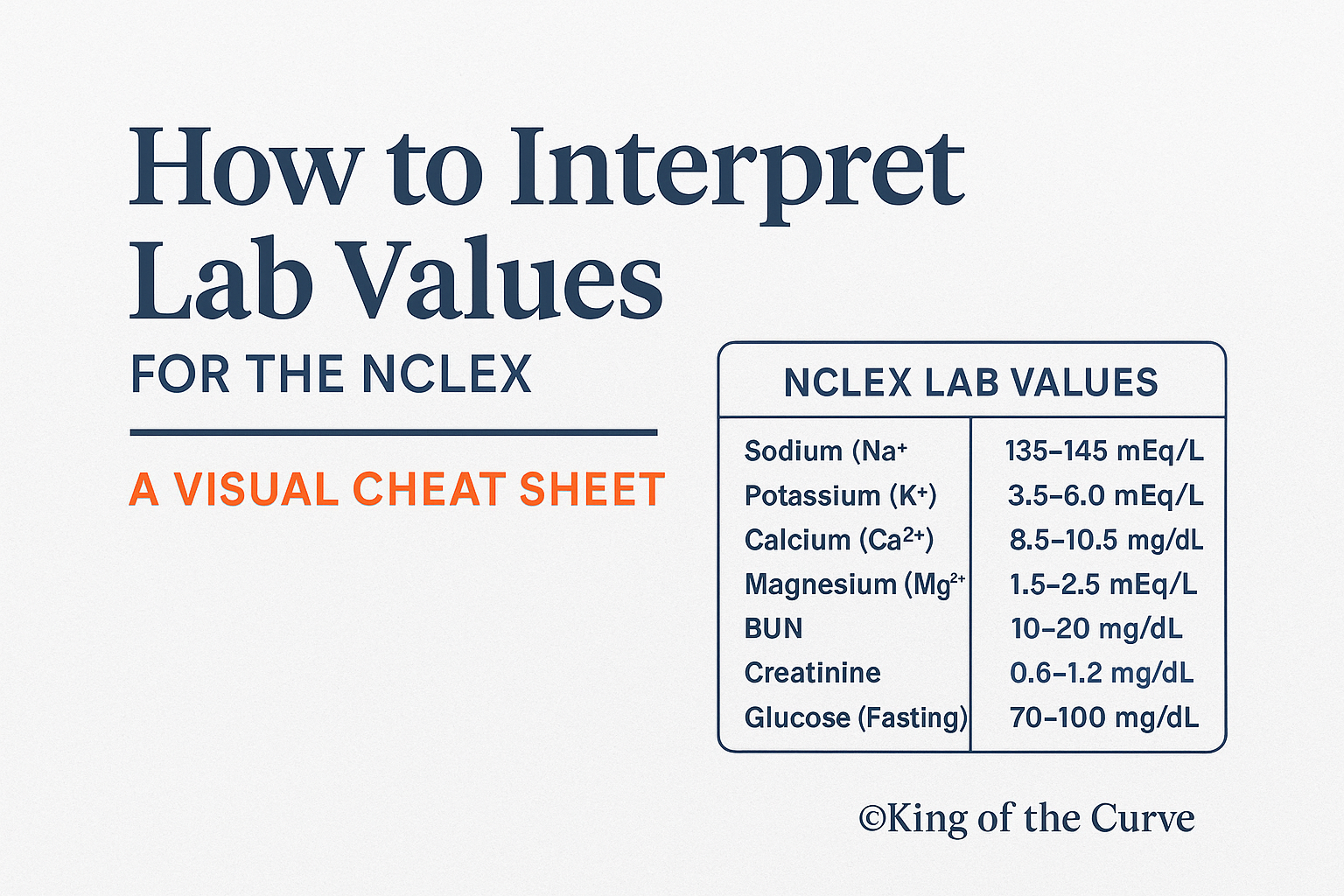🧠 How to Interpret Lab Values for the NCLEX: A Visual Cheat Sheet
Lab values are a foundational part of NCLEX prep—and a top area of confusion for many test-takers. You might know that potassium should be 3.5–5.0, but do you know when it becomes a life-threatening priority?
In this blog, we’ll walk through:
The most tested normal lab ranges
When lab values become critical
A KOTC visual to simplify your review
How to use labs to answer NCLEX-style questions
🧪 High-Yield Lab Ranges to Know
| Lab | Normal Range | Why It Matters |
|---|---|---|
| Sodium (Na⁺) | 135–145 mEq/L | Affects neuro status—think seizures, confusion |
| Potassium (K⁺) | 3.5–5.0 mEq/L | Cardiac rhythm priority—monitor for arrhythmias |
| Calcium (Ca²⁺) | 8.5–10.5 mg/dL | Think bones, clotting, and muscle twitching |
| Magnesium (Mg²⁺) | 1.5–2.5 mEq/L | Affects reflexes, sedation, and heart rhythm |
| BUN | 10–20 mg/dL | Indicator of kidney function |
| Creatinine | 0.6–1.2 mg/dL | Best indicator of kidney filtration |
| Glucose (Fasting) | 70–100 mg/dL | Essential in diabetic management & LOC |
📌 How Lab Values Appear on the NCLEX
Lab-based NCLEX questions often include:
Who should the nurse assess first?
Which value is abnormal?
What is the most appropriate nursing action?
Sample Question:
A patient has a potassium level of 6.8. Which action takes priority?
✔️ Answer: Administer insulin with D50 to shift potassium intracellularly.
🧬 Before You Go…
King of the Curve is redefining NCLEX prep with:
Adaptive Qbank with spaced repetition
Gamified practice modes
Over 100,000 downloads by top nursing and med students
1000+ visuals like the one in this blog
🚀 Call to Action
✅ Start your free trial of the NCLEX Qbank: kingofthecurve.org/trial-sessions
✅ Or access free lifetime content: kingofthecurve.org/free-lifetime
✅ Sharpen skills daily with NCLEX QOTDs
Frequently Asked Questions (FAQs)
-
Aim for 4-6 focused hours, ensuring you incorporate breaks to avoid burnout.
-
Practice mindfulness techniques, take practice exams under realistic conditions, and maintain a balanced lifestyle.
-
Set short-term goals, seek support from mentors, and reward yourself for small achievements.
-
Regular exercise improves focus, reduces stress, and enhances overall mental clarity.
-
KOTC offers personalized learning tools, gamification features, and adaptive question banks to help students stay on track without burnout.


